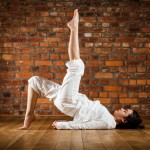 We all know it’s important to breathe through life.
We all know it’s important to breathe through life.
Evidently, otherwise there would be no life to breathe through. But are we all really aware of how we can use the breath as a tool to completely change our wellbeing, outlook and quality of life?
Let’s find out…
What is Pranayama?
Pranayama is the art and science of yogic breathing.
It can enforce physical well-being, clarity of mind, inner and outer health, focus, calm, tranquility, intent… do you need anymore?
Our conscious life essentially begins with our first breath, and ends with our last. Breathing is something that innately happens to us from the moment we are born, we cannot exist without a constant flow of oxygen reaching our every cell and carbon dioxide being continuously taken away.
The breath also connects with us emotionally.
Emotions can correlate with breathing patterns. For example, when we experience calmness, serenity and relaxation our breathing tends to be slow, deep and smooth; as opposed to experiencing anxiety or panic, when our breathing becomes fast and uncontrollable. Even the rhythms of our heartbeat are connected to the actions of our lungs.
By bringing our awareness to particular methods of pranayama, we can change the way we breath naturally, but also create certain techniques we can practice each day and use these to create all the benefits we are striving for in life.
Our prana is translated as Life Force.
It is an energy which exists both within us and without us.
The fact that yoga comes from India can sometimes make concepts like pranayama seem a little esoteric, removed or inaccessible to those of us from the West, particularly when many of the methods and techniques are in the Sanskrit language. But pranayama is simply breathing in new ways, in order to create a sense of well-being, physically emotionally and spiritually.
3-part breath
The 3-part breath, or full yogic breathing is a commonly practiced technique in yoga. It is often practiced at the beginning of a class or a practice.
It involves us using various areas of the body to breathe into. We begin with the abdomen, then the ribs, then the chest; eventually we begin to breathe into all of these in one breath, and exhaling slowly through each one. It aims to use all aspects of the physical body available to us.
Many people are (unbeknownst to them) shallow breathers, often only breathing into the chest/lungs. Practicing the 3-part breath opens up the areas to help create a deeper breath, thus allowing more oxygen in… which is always only a good thing!
Nadhi Sodhana
Nadhi Sodhana, or alternate nostril breathing, is also another commonly used pranayama technique.
It involves breathing in through one nostril, and out through the other (blocking the nostril not in use with your thumb or fourth finger). This method is great for lowering the heart rate, thus a reduction in stress or anxiety is likely to be experienced.
It is said that the nostrils are connected to the two hemispheres of the brain, and practising this method helps to balance them, by balancing the amount of oxygen moving through each nostril. It is also said to purify the subtle energy channels in the body, allowing our prana to flow more easily.
Ujayi Breath
Ujayi Breathing, or Ocean Breathing, is used as a pranayama technique, but also used in Ashtanga Yoga throughout your asana practice.
It is practiced by inhaling through the nostrils, and exhaling through the nostrils, as you exhale gentle closing the back of the throat to create an ocean sound. Ujayi breath strengthens the diaphragm, creates a sense of calm and focus and quiets the mind.
It also helps us have a smooth, specific focus to our breath throughout the whole practice.
Most importantly perhaps, is the fact that this breathing creates an internal heat within the body, nose breathing filters the air and makes it moist and heats the body. Therefore the air comes to the lungs in the best condition possible. Dry or cold air can aggravate respiration, so hot air (both within and without the body) is healthy for our overall breathing. Ujayi breathing can often be used during meditation because of its huge benefits on calmness of mind.
Bhramari
Bhramari pranayama or ‘humming bee breath’ is practised mainly during meditation.
We begin by sitting in a meditative pose. The thumbs come to the ears, and block them so the only sound you can hear is yourself. The other fingers come to the skull. You inhale deeply through the nostrils, as you exhale (keeping the mouth closed but the teeth apart), start to produce a long, continuous humming sounds (like that of a bee).
The aim is to feel the vibrations within your head, throat and nose.
When you run out of breath, take a deep inhale and begin again. Start by practising 5 rounds, and build up slowly. Bhramari, just like chanting meditations, stimulates the neurons in the brain, bringing awareness the vibrations within ourself. It is also said to relieve tension, anger, anxiety and lower the blood pressure.
Breath is life
In the end, breath is life.
Prana is our life force. What else do we need to exist? A force of life, an energy, and a movement of these.
Pranayama can create all of these, whilst creating an inner awareness as well as an outer expression of inspiration. This may all sound too ethereal, esoteric and just too airy-fairy for you. Yes, you may feel a tad foolish humming away like a bee in the morning, or trying to sound like the ocean, your friends may laugh…but it’s all worth it. Physically, yes, pranayama can help internally, but really the main effects manifest themselves in the nervous system and in the subtle energy body.
Try it, everyday, and start to feel the huge benefits.
If it’s not working and you start to get frustrated…well…just take a few deep breaths.